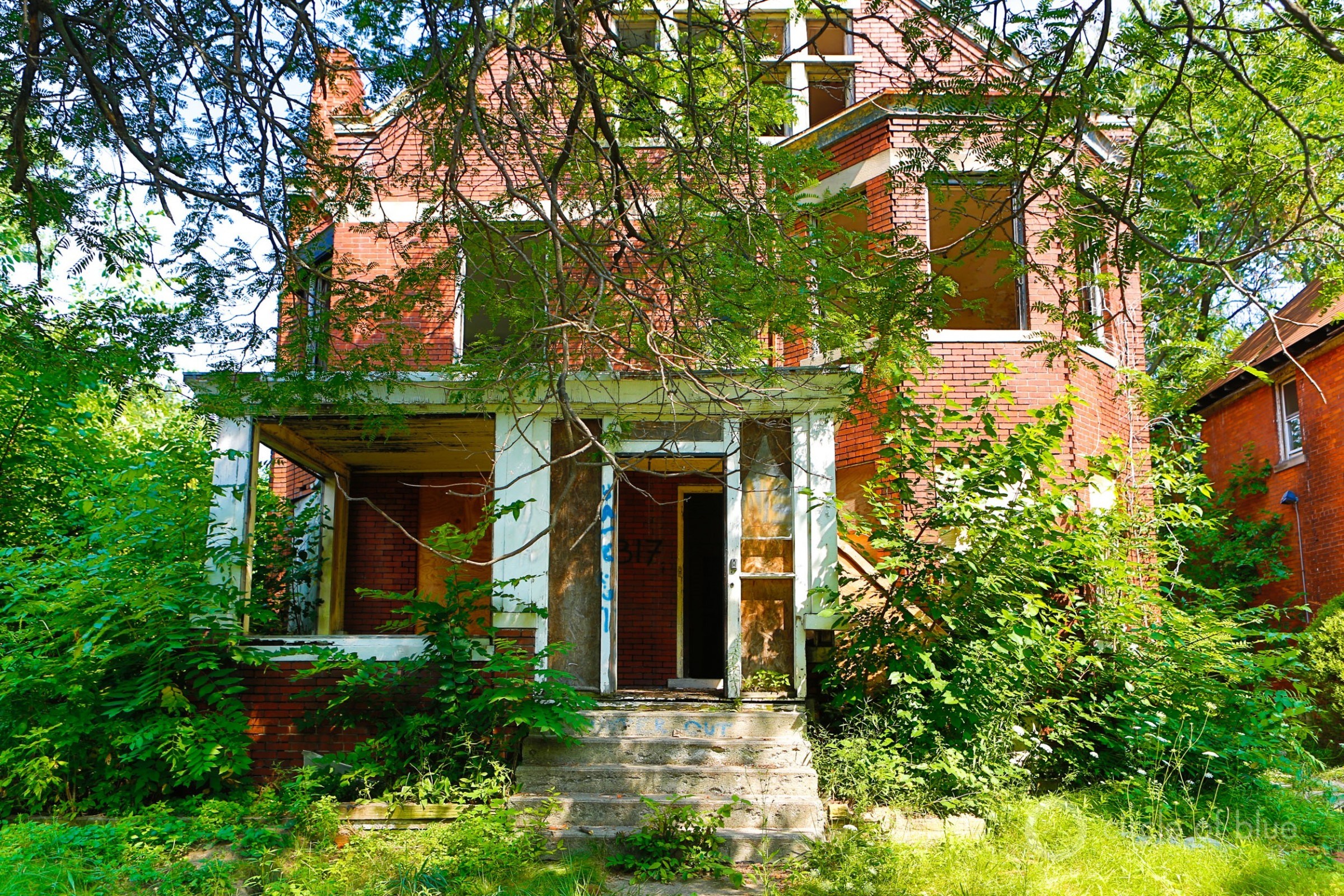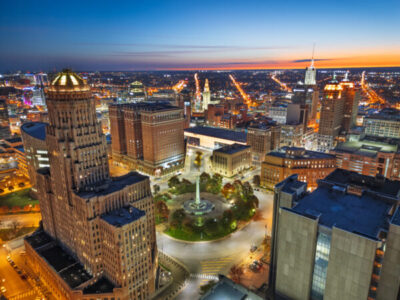
By Brett Walton, Circle of Blue
The Great Lakes News Collaborative includes Bridge Michigan; Circle of Blue; Great Lakes Now at Detroit Public Television; and Michigan Radio, Michigan’s NPR News Leader; who work together to bring audiences news and information about the impact of climate change, pollution, and aging infrastructure on the Great Lakes and drinking water. This independent journalism is supported by the Charles Stewart Mott Foundation. Find all the work HERE.
Even in the wealthiest countries, basic water services are not universal. At least 1.1 million people in the United States do not have hot and cold water running water in their house and a shower or tub for bathing, a new study finds.
This “plumbing poverty” is highest in cities and most acute in those like San Francisco that have the greatest income inequality.
Lack of plumbing infrastructure is not limited to those who are experiencing homelessness. Katie Meehan, lead author of the study, said that this is a key insight.
Even though the study found that plumbing poverty is tightly linked with traditional indicators of marginalization such as income and race, Meehan said that other factors are at play. Plumbing poverty is also tied to housing: renters and people who live in mobile homes are more likely to lack complete plumbing services than homeowners.
Meehan said that focusing on these structural issues where there are legacies of discrimination is a way to reframe the problem of water access. Instead of looking at it as a technical matter of building more pipes or increasing supply, Meehan prefers the question of why the pipes were not extended to certain areas to begin with.
“This draws attention away from poor people and to the institutions that produce poverty,” Meehan, a senior lecturer in human geography at King’s College London, told Circle of Blue.
The study, which was published November 2 in the journal Proceedings of the National Academy of Sciences, painted the nation’s water access challenges in broad but nuanced strokes. It found that 73 percent of people without complete plumbing live in metropolitan areas. Nearly half live in the nation’s 50 largest cities. Households led by a person of color were 35 percent more likely to have incomplete plumbing than a white household. Renters in the largest cities were 61 percent more likely to have incomplete plumbing than homeowners. Neighborhoods with higher income inequality were more likely to have plumbing deficiencies.
The high number of urban residents without complete plumbing services is an interesting result that runs counter to the typical narrative that plumbing deficiencies are most prominent in rural areas, Meehan said.
Though New York and Los Angeles had the highest number of people living without complete plumbing, San Francisco had the highest proportion of residents in those circumstances. Portland, Milwaukee, and San Antonio also had high relative numbers of plumbing poverty.
Sera Young is an associate professor of anthropology and global health at Northwestern University who focuses on household water insecurity. Young, who was not involved in the study, commended the research for debunking the idea that inadequate plumbing is primarily a rural problem.
“Water security is a concern worldwide, and here in the U.S., we are not immune to it,” Young wrote to Circle of Blue in an email. “Not only is the 1.1 million individuals with plumbing poverty in the U.S. likely an underestimate, the numbers have likely worsened since 2018.”
Meehan concurred that the numbers are most likely an undercount and the results are the “low end” for those lacking plumbing. The data for the analysis came from the American Community Survey, a questionnaire that is administered annually by the U.S. Census Bureau and sent to households. The study used data from 2013 to 2017. The plumbing question currently asks about hot and cold running water and a shower or tub for bathing. The Census Bureau, at the request of Congress, stopped asking whether homes had toilets in 2016.
Stephen Gasteyer, an associate professor of sociology at Michigan State University who was not involved in the study, said it helps to fill an information gap: estimating the number of people in the United States who lack water and sanitation service.
Gasteyer, who researches water access, contributed to a separate report published last year that examined not only water access but toilet facilities. That report, which used earlier Census data that included the toilet question, estimated that 2 million people in the U.S. do not have those services.
These sorts of numerical assessments are only a beginning, Gasteyer said. The next step is to investigate why numbers are high in certain areas and not in others. One of the weaknesses of the Census data, he said, is that it’s not clear why a person says they don’t have plumbing services. Is it because their water has been shut off for several months due to unpaid bills? Or is it because there is no piped connection to their house? Or are they living on the streets but have a mailing address?
“If we’re going to fix the issue, we need to understand what’s behind the data,” Gasteyer said. “We need to do case studies to understand the mechanisms and not just the numbers.”
Gasteyer said that the study’s finding that renters are more likely to have deficient plumbing aligns with his experience doing field work on water access in Mississippi. Activists there told him that it is difficult for renters to hold landlords accountable for inferior service.
Meehan is similarly intrigued by the mechanisms by which plumbing poverty occurs. The Census data provides a broad view but does not explain the process for any particular city.
“Does it tell you how the engine works? No,” Meehan said. “That requires additional research.”
Read more on water access on Great Lakes Now:
Lack of Utility Data Obscures Customer Water Debt Problems
In a time of COVID-19, millions of Americans are plagued by water debt
Minority communities question election-year push by EPA
Michigan governor releases $500 million water infrastructure plan
Policy Expert Q&A: Keep advocating with elected officials for safe drinking water
Featured image: A house in Detroit where water had been shut off in 2014. (Photo by J. Carl Ganter/Circle of Blue)
2 Comments
-
“Plumbing Poverty” WTF?? The home shown is one of thousands abandoned in Detroit.. Problems with internal plumbing are the responsibility of the building owner, but, how many landlords have experienced renters who destroy fixtures and damage these homes when they leave.. or are forced out??? “Personal responsibility” has meant for years that such things as taking care of systems within a house reside withe resident or owner and if a rental, require a modicum of care from those renters!! “Plumbing Poverty” is a just another liberal excuse to make people unable to care for themselves VICTIMS!! KNOCK ITOFF!! Grow up!
-
The main reason why plumbers make so much, is because a lot of people do not want to do it, and it is a necessary service. This is pretty much for all the trades out there. The majority of all buildings need plumbing, and there is a shortage of plumbers, which increases how much they make.




